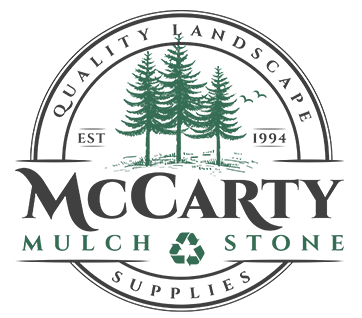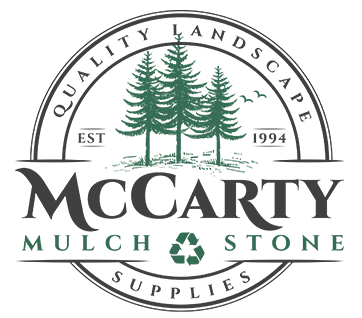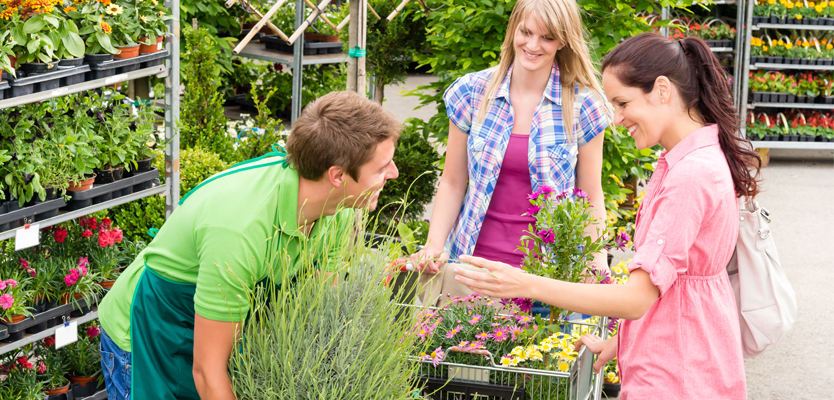Making the Best Garden Soil
Some gardeners are blessed from the beginning with great garden soil, that’s great! This article is for those of us that must work at it. And, while we’re talking about it, keep in mind you can buy bulk garden soil which is great for those in a hurry, waiting too late in the season, or simply wanting to go straight to planting. Our planter mix is a great option to jump-start your garden this year!
Now for you DIY’ers.
Examine the soil you are starting with, sandy, stony, or mucky clay. Is your soil acidic? How is the ecosystem beneath the surface (microbes, insects, and worms)? Building healthy soil isn’t difficult once you understand what you have to work with and what makes soil “healthy.”
Soil Texture
There are three main types of soil. Sand has a very loose, grainy texture and provides excellent drainage. Silt has a medium texture and is less grainy than sand but more so than clay and provides less drainage than sand. Clay has a very fine granular texture and drains very poorly. Chances are your soil is a mixture of these in varying proportions. These proportions will affect how well your plants grow due to drainage and the availability of nutrients. Fortunately, you don’t need to hire a professional to determine the texture of your soil.
Determine Your Soil Type
The quickest way to have a general idea of your soil type is to grab a small handful and make sure it’s damp (not soaking wet) take a pinch and rub it between your fingers. If it feels slimy and slippery, it has a high clay content. If it’s gritty, it’ll have more sand. Silt feels smooth like wet talcum powder.
If you want to feel like a scientist, you can do the jar test. Take a dry sample of your soil and crush it into as fine a powder as you can manage. Fill the bottom of a clear glass jar (quart size) with about an inch of your powdered soil sample and then fill it two-thirds with water, finally, add a teaspoon of liquid dish soap to help the particles separate. Shake it up! Once you set it down, the sand will begin to settle to the bottom, the silt will take a few hours, and the clay could take days. You will be able to see a visible difference in the layer of sand compared to the silt and clay. Now grab a ruler and do some math. You used an inch of soil, so if the sand layer is a half-inch thick, your soil is 50% sand. The ideal proportions are 40% sand, 40% silt, and 20% clay, but if your soil falls short of this don’t worry. Using organic matter, we can manipulate your soil to exactly what you need.
Organic Matter
Organic matter is the decomposing remains of vegetative matter and soil organisms. This includes grass, leaves, trees, mulch, peat moss, animal manures, etc. You can also use compost. Soil organisms include worms, springtails, mites, protozoa, bacteria and fungi, and other tiny creatures. These organisms can be your best friend as they consume and convert organic matter and minerals in the soil into the nutrients your plants need to grow. And, don’t forget that earthworms till your soil for you.
Improving your soil
Once you’ve determined your soil type, you can follow the directions below to build the soil you need for your plants.
To improve sandy soil, you will want to add three to four inches of organic matter like compost, peat moss, and/ or manure. Work the organic matter you’ve chosen into the soil about 6 inches deep. Once you’ve planted, be sure to mulch around your plants to help retain moisture by cooling the soil. You’ll want to add 2-3 inches of matter each year.
To improve clay soil, which tends to pack too tightly and block out nutrients and organisms, add 2-3 inches of organic matter like decomposing grass, leaves, peat moss, and compost. Work it 5-6 inches into the soil and add another 1-2 inches each year. Repeating this process in both the Spring and Fall gives you the best benefit. Try to avoid foot traffic or anything that can compact your soil after you’ve worked it. Keep tilling to a minimum letting the worms do their job. Add worms as needed.
Silty soils are usually fertile, but they do have poor drainage, so you’ll want to add one inch of organic matter each year working it mostly into the top few inches. Like clay, try to avoid anything that will compact your soil like foot traffic or tilling too often.
Soil Acidity
The acidity in your soil affects the availability of nutrients to your plants. If the acidity is too high or too low, the nutrients can become chemically bound to the soil and unavailable for your plants to absorb as food. Acidity is measured on a pH scale with a pH of 6.5 to 6.8 being the best range for your plant’s growth.
To test your soil, you need a pH tester similar to what you might use for a pool or hot tub. They do make testers for soil which you can likely find in your local garden center or online for less than twenty dollars.
Changing the pH of your soil doesn’t happen overnight. It may take one or two seasons to get in the range you want, then you maintain it thereafter. Keep adding that organic material though as it will continue to add nutrients and help moderate any pH imbalances.
To improve the soil with high acidity or pH less than 6.5 you can add powdered limestone. It will take several months to alter pH levels so you’ll want to add it in the fall. Alternatively, you can add wood ash which works more quickly, but it’s easy to use too much which will swing the pH too far in the other direction. A good rule of thumb is two pounds per one hundred square feet. In sandy soil use three to four pounds of limestone per one hundred square feet. In well-proportioned soil, use seven to eight pounds, and in mostly clay soils use eight to ten pounds.
To improve the soil with too low acidity the common ingredient is sulfur, but you can also use highly acidic organic matter like peat moss and pine needles. In sandy soil, use one pound of sulfur per one hundred square feet. In good soil, use one and a half to two pounds. In mostly clay, use two pounds.
Long-term planning.
Do keep in mind that different plants prefer different soils. Blueberries and azaleas, for example, prefer more acidic soil than the 6.5 – 6.8 range that most plants prefer. Some plants require better drainage than others that might prefer consistently water-laden soil. The above guide will certainly get you started, but always best to learn about the needs of the plants you intend to grow and alter your soil from there.




